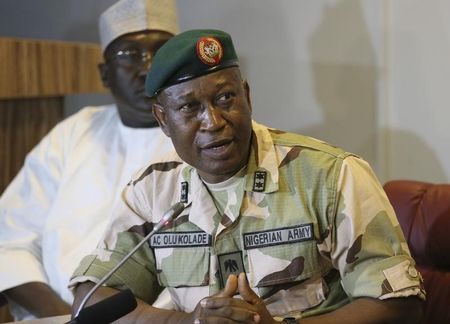MAIDUGURI Nigeria (Reuters) - More than 130 Boko Haram Islamist fighters have surrendered to Nigerian forces, and a man posing as the group's leader in numerous videos had been killed in clashes, the military said on Wednesday.
The army has stepped up military operations against Boko Haram in the remote northeast since the rebels seized several small towns and declared the area they control a "Muslim territory".
The group, which has killed thousands in five years of hit-and-run attacks on military installations and civilians has grown increasingly ambitious in the past two months and started trying to take and hold ground in Africa's largest oil producer.
The army said 135 Boko Haram fighters had handed their weapons to troops on Tuesday in the northeast town of Biu, near the epicentre of Boko Haram's campaign to carve out an Islamist state.
The military added Boko Harma had also been trying to take over the town of Konduga, near the Cameroon border, from Sept. 12-17 but had been repelled by air and land forces.
"In the course of those encounters, one Mohammed Bashir, who has been acting or posing on videos as the deceased Abubakar Shekau ... known as leader of the group, died," said Defence spokesman Major-General Chris Olukolade.
Throughout the militants' insurgency, which has morphed from a radical but relatively peaceful clerical movement into a bloodthirsty insurrection, a man claiming to be the Islamists' leader, Abubakar Shekau, has periodically released videos of himself issuing threats and taunting the authorities.
One showed him claiming responsibility for the April abduction of 200 schoolgirls from the remote village of Chibok, which sparked an international outcry. They remain in captivity.
Nigeria's military also released photographs of dozens of detainees sitting on the floor and the alleged body of the leader.
Shekau took over leadership of the movement after its founder Mohammed Yusuf died in police custody in 2009.
Nigeria's military in August 2013 said Shekau may have died of gunshot wounds some weeks after a clash with soldiers between July 25 and Aug. 4 that year.

After that, the man appearing in videos appeared to look different, with a rounder, less narrow face and a wider nose.
(Additional reporting Tim Cocks and Camillus Eboh; Writing by Tim Cocks)
